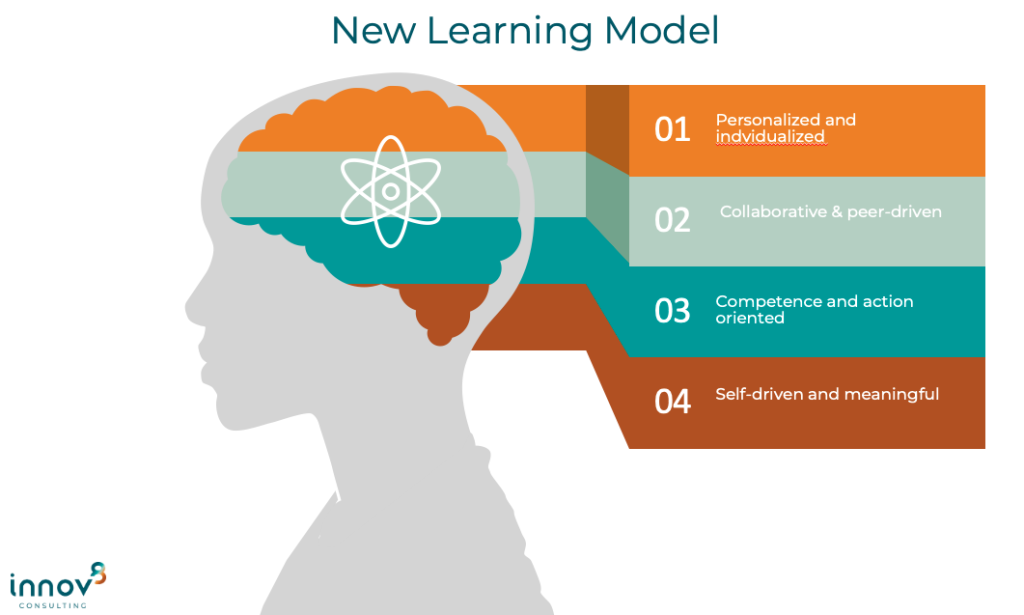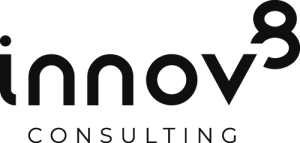Industrial-age learning no longer works
As knowledge quickly becomes outdated, employees often lack time to learn while at the same time global developments accelerate, keeping your skills up to date becomes increasingly difficult. To tackle these challenges, we need relevant, just-in-time learning options and leaders who prioritize learning – this is New Learning. New Learning isn´t necessarily new learning tools or methods, it is rather a different mind-set and how existing methods, content and knowledge exchange is organized.
What is New Learning?

New Learning is based on Frithjof Bergmann’s New Work concept and aims at the self- and potential development of the individual. New Learning refers to learning that is perceived as meaningful by the learner and enables participation in the community. The learning processes are characterized by self-determination, autonomy, action orientation and the pursuit of effectiveness. It holds true that learners experience a high degree of self-responsibility and a sense of belonging to the (learning) community.
How can a new learning approach succeed?
To succeed, New Learning requires a suitable organizational context, including culture, leadership, rewards, and work design. In settings without employee self-organization, implementing this approach becomes difficult. Expecting self-directed learners without autonomy at work and influence in their departments is unrealistic, emphasizing the interdependence of New Learning and New Work.
In my own corporate career, as an employee I was often served with a smorgasbord of digital learning offerings to help myself, when I have some time. I hardly ever had the time to learn in my busy days. And I don´t even recall a CEO that pushed learning as a key activity in the organization. As a leader I was challenged with on the one hand providing support and resources to learning while my team´s KPI did not measure upskilling and people development. As a learning advocate this represented a dilemma – how can I facilitate employee development without getting the required resources, time and KPIs form my organization?
In my view we need new approach to corporate learning to meet this challenge effectively from two directions: top-down sponsorship from leaders and bottoms-up self-directed learning within the workflow.
Here are some recommended best practices to get you startet
- For Managers
-
-
- Discuss with your team their learning needs and define clear learning objectives for the team and individually and
-
- Provide learning time to employees – ideally a few hours per week which are blocked for learning related activities
-
- Foster collaborative learning in your team such as weekly knowledge sharing lessons, peer-to-peer mentoring, shared experimentation and design thinking activities, job shadowing & job rotation and group projects
-
- Reward and recognize achievements and allow for reflection on learnings from projects or joint activities
-
- Lead by example – prioritize your own development and make time per week for yourself to explore and learn
-
- For Employees
-
-
- Assess your own learning needs by reflecting on areas that you would like to develop and setting objectives for what you would like to achieve in future
-
- Evaluate your competencies in relation to your job profile and consider what digital and human skills are critical for you to adapt and grow in future
-
- Align with your manager on what needs you have, how they are relevant for your development and what timelines you have in mind to get there
-
- Build a personal learning plan and timeline
-
- Identify learning offerings that you like and that are best suited to your learning style
-
- Plan for learning time in your calendar per week
-
- Engage with your team members on joint activities, sharing feedback, asking questions and staying curious
-
- Take ownership – measure progress and document r
-
- For HR
-
-
- Assess current learning offerings and their effectiveness and learner feedback
-
- Engage with top leaders on company strategy – what are the organizational ambitions and objectives, where are we today from a skill & resourcing perspective and what are the to-be skill and competencies that are critical to support these objectives
-
- Consider your own role – to what extent are you focusing on providing learning offerings vs. facilitating learning processes with teams directly?
-
- Make learning a strategic objective – raise awareness with leadership on why learning is critical and how innovation and growth depends on it
-
- Shift from content focus to understanding learner needs – engage regular with employees at all levels to understand what they actually need and to what extent they can use what is there
-
- Engage, engage, engage with employees and leaders on all levels to establish a learning mind-set and create the organizational conditions for time to learn
-
- Measure, report and create success stories on learning related activities from teams and individuals to inspire
-
- For Executives
-
-
- Consider your own stand-point with regards to learning – to what extent do you consider it mission critical?
-
- Define learning objectives that you consider critical in relation to the corporate strategy and discuss with fellow leaders
-
- Culture eats strategy for breakfast – how can you lead by example and take action, how do you contribute to create a positive learning culture where it is ok to make mistakes and where feedback and continuous improvement are the focus?
-
- Create the conditions and provide resources – provide learning targets and objectives for all teams, provide time and resources and establish KPIs and balanced scorecards for learning
-
- Engage externally with other executives – to learn from their best practices and set a positive example for your own organization
-
-
- Discuss with your team their learning needs and define clear learning objectives for the team and individually and
-
- Provide learning time to employees – ideally a few hours per week which are blocked for learning related activities
-
- Foster collaborative learning in your team such as weekly knowledge sharing lessons, peer-to-peer mentoring, shared experimentation and design thinking activities, job shadowing & job rotation and group projects
-
- Reward and recognize achievements and allow for reflection on learnings from projects or joint activities
-
- Lead by example – prioritize your own development and make time per week for yourself to explore and learn
-
- Assess your own learning needs by reflecting on areas that you would like to develop and setting objectives for what you would like to achieve in future
-
- Evaluate your competencies in relation to your job profile and consider what digital and human skills are critical for you to adapt and grow in future
-
- Align with your manager on what needs you have, how they are relevant for your development and what timelines you have in mind to get there
-
- Build a personal learning plan and timeline
-
- Identify learning offerings that you like and that are best suited to your learning style
-
- Plan for learning time in your calendar per week
-
- Engage with your team members on joint activities, sharing feedback, asking questions and staying curious
-
- Take ownership – measure progress and document r
-
- Assess current learning offerings and their effectiveness and learner feedback
-
- Engage with top leaders on company strategy – what are the organizational ambitions and objectives, where are we today from a skill & resourcing perspective and what are the to-be skill and competencies that are critical to support these objectives
-
- Consider your own role – to what extent are you focusing on providing learning offerings vs. facilitating learning processes with teams directly?
-
- Make learning a strategic objective – raise awareness with leadership on why learning is critical and how innovation and growth depends on it
-
- Shift from content focus to understanding learner needs – engage regular with employees at all levels to understand what they actually need and to what extent they can use what is there
-
- Engage, engage, engage with employees and leaders on all levels to establish a learning mind-set and create the organizational conditions for time to learn
-
- Measure, report and create success stories on learning related activities from teams and individuals to inspire
-
- Consider your own stand-point with regards to learning – to what extent do you consider it mission critical?
-
- Define learning objectives that you consider critical in relation to the corporate strategy and discuss with fellow leaders
-
- Culture eats strategy for breakfast – how can you lead by example and take action, how do you contribute to create a positive learning culture where it is ok to make mistakes and where feedback and continuous improvement are the focus?
-
- Create the conditions and provide resources – provide learning targets and objectives for all teams, provide time and resources and establish KPIs and balanced scorecards for learning
-
- Engage externally with other executives – to learn from their best practices and set a positive example for your own organization
How can we help you to build a path to New Learning?
We can support you with assessing your current situation and define a vision and roadmap for you to implement a new learning approach in your organization. Explore our services and feel free to reach out a free consultation on this topic.





